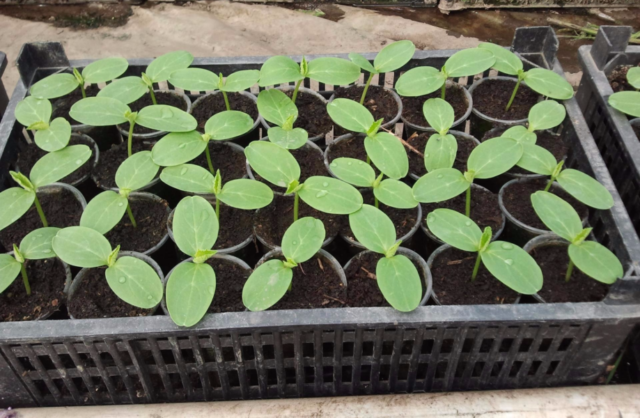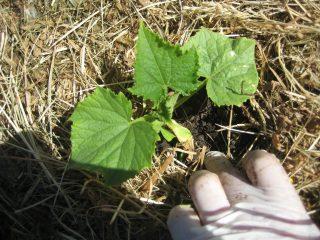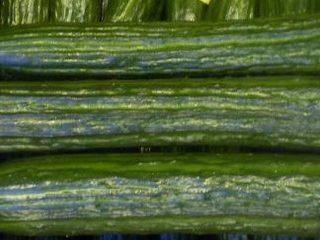Content
Almost every gardener has his own favorite varieties of cucumbers. These may be earlier varieties or late-ripening ones, depending on the purpose of their cultivation. Cucumber Shosha F 1 is a domestic hybrid and is popular among many gardening enthusiasts.
History of variety selection
This is a hybrid variety that was bred by domestic breeders. The breeding was carried out by the agricultural company "Partner", which tested the Shosha cucumber variety on open and protected soils, mainly in the non-chernozem zone of Russia. Therefore, these cucumbers are best grown in these climatic conditions.
The originator of the variety is Vasily Ivanovich Blokin-Mechtalin. The variety is included in the State Register of the Russian Federation for cultivation in open ground and under temporary film cover.
Description of Shosha cucumbers f1
The plant of this variety is of medium height. The main stem reaches a length of 1.5–2 meters. The root system is powerful, and the side shoots are short.
The flowering type is female; the flowers do not require pollination by insects. The flower is crown-shaped and bright yellow.Productivity with quality care increases to 18 kg per square meter. m.
Up to 4 green flowers are formed on one node, but more often there are 1–2 flowers per node. The leaf of the plant is green, medium length.
Description of fruits
The fruits have good taste; in addition, the fruit is classified as a salad fruit. The color of cucumbers of this variety is dark green. The surface of the cucumber is lumpy and pubescent. According to the description, Shosha cucumber has a thin skin, which completely lacks the taste of bitterness. The color of the pulp is light green. The cucumber has an elongated shape, about 10 cm long and 3 cm in diameter. The approximate weight of the fruit is 50 grams. The seeds are small and tender.
Characteristics of Shosha cucumber
The main advantage of the variety is its high yield and good taste. Most gardeners speak positively about both the ripening time and the characteristics of fruiting.
Productivity and fruiting
The highest yield of cucumbers is still observed in greenhouse conditions, although a fairly large harvest can be harvested in open ground. About 40 days pass from the emergence of seedlings to the formation of the first greenery. With good care and high-quality agricultural technology, Shosha can produce a harvest of 12–18 kg per square meter. It is important that the planting density is no more than three plants per 1 square meter. m. The productivity of Shosha cucumbers, both according to reviews and in the photo, is high throughout the growing season.
Productivity is directly affected by temperature, humidity, and environmental stability. Therefore, in greenhouses, the yield of Shosha cucumbers, according to reviews, is greater, since the temperature there is stable throughout the growing season.
In a cool room, the harvested crop can last up to two weeks, and is also easy to transport.
Application area
The variety is considered a salad variety, but in fact its scope is wide. Small gherkins, harvested at the greens stage, are quite suitable as a material for pickling and other types of home canning.
Resistance to diseases and pests
This is another advantage of this hybrid. Shosha cucumber is resistant to most viral diseases that are inherent in cucumbers. The variety is resistant to cucumber mosaic, yellowing of the veins on the fruit, as well as powdery mildew.
There are some types of pests that can attack and parasitize the Shosha cucumber. First of all, it is a leaf roller. But with the use of simple preventative measures, the gardener can resist their attack.
Advantages and disadvantages of the variety
Gardeners who planted the Shosha cucumber note the complete absence of negative aspects. Among the advantages:
- excellent taste;
- wide application;
- high level of keeping quality;
- good transportability indicators.
All this makes the Shosha cucumber from the Partner company an excellent variety for both home and industrial cultivation.
Growing Shosha cucumbers
The Partner company developed Shosha cucumbers so that they can be grown both in a greenhouse and in open ground, and even on a windowsill at home. It is important to choose the right seedlings and provide the plant with high-quality agricultural technology.
Planting seedlings
Cucumbers of this variety can be planted either by seedlings or using seeds. The algorithm for growing seedlings is as follows:
- You need to take a small box and put soil for seedlings there.
- The seeds should be at the bottom.
- 4 weeks should pass before planting in open ground.
But in any case, according to reviews, it is recommended to plant seedlings of the Shosha cucumber variety no earlier than mid-April.
To plant in open ground, seedlings should be hardened off. To do this, boxes with seedlings are placed outside for an hour. Gradually the time increases until future cucumbers spend up to 6 hours in the fresh air.
You can plant cucumbers at the moment when the temperature reaches about 16 °C and remains stable at this level. The soil needs to be dug up mixed with humus and chicken droppings, especially for transplanting Shosha f1 cucumbers. Reviews about planting with such fertilizing are positive.
Seedlings need to be planted according to the scheme, so that per 1 m2 there were no more than 5 plants. This is optimal for both open ground and greenhouse conditions.
Growing cucumbers using the seedless method
When sowing seeds in open ground, it is necessary to maintain timing so that they are not affected by cold temperatures during germination. Usually this is no later than April 15th. The soil must first be thoroughly cultivated, since cucumber loves light and fertile soil. The optimal predecessors for cucumbers will be legumes, early varieties of cabbage, onions and garlic, as well as greens.
The soil is prepared three weeks before planting. Compost, rotted sawdust, horse manure, possibly horse manure, as well as peat and dolomite flour are added.
After three weeks, you can sow the seeds, which should be soaked first. Those that fall to the bottom in water at room temperature are of high quality. Floating on the surface - discard.
Aftercare for cucumbers
As cucumbers grow, they require some care. If you follow all the rules, then in the end the harvest will be good and the taste will be excellent. The care process includes:
- moderate but daily watering;
- during the growth period, use liquid fertilizers for feeding;
- weed - once a week;
- It is worth tying up the bush for greater yield.
Bush formation
It is necessary to carry out pinching of cucumbers, that is, removing unnecessary shoots.
You need to remove excess shoots in the axils of 3–4 leaves, as well as side shoots in the axils of 5–6 leaves. It is important not to confuse or remove shoots with ovaries. Stepchildren should be at least 4–6 cm long. But it is not recommended to leave long shoots. If they are up to 20 cm, then the gardener will not get part of the harvest in any case, since the stepsons will absorb some of the nutrients.
Conclusion
According to the characteristics and description of the variety, the Shosha cucumber is a popular and quite productive one. This is an early ripening hybrid, which is used both in industrial production and for growing at home. Agricultural technology is not difficult, and disease resistance allows you to grow without additional costs. The Shosha cucumber is described in detail in the video and shown so that inexperienced gardeners know how to grow it.
Reviews













